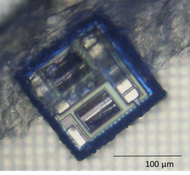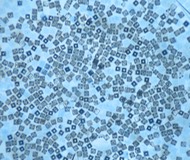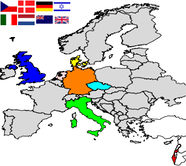In this work package, the docking station will be designed and fabricated. The docking station will be used to program and power up lablets, until alternative energy sources become available (possibly later in the project). The docking station will also be used to prototype and bootstrap new lablet functionality in a fully connected, non-autonomous mode. Passive lablets without electronics can be used together with the docking station to test the chemical reaction processing capabilities of lablets, and significant functionality can be achieved already at this level, including reversible detachment of passive lablets. Prior to lablet fabrication, PDMS microfluidics can be used to test many unilateral docking station functionalities. Later in the project, the docking station will also be used to explore lateral interactions between lablets (e.g. cascaded processing), a precursor to “domino” lablet processing. The docking station consists of a regular array of lablet-sized elements (designed to dock individual lablets) and an external region for ancillary electronics and bond pads. The docking station will be a silicon chip of size between 5x5 mm and 10x10 mm depending on fabrication constraints. The lablet design and fabrication in WP 6 will be reused as much as possible, but potential or necessary differences include: the supercap structure (not required in the docking station, although we may choose to test it on the docking station), additional power transfer, programming and communication structures, enhanced device complexity (possibly involving higher resolution circuits) and connections to an external computer. The docking station will be wire-bonded to a mounting including a temperature control device, compatible with reflection microscope monitoring. The docking station will build heavily on extensive experience with electronic microfluidics by the partner RUBa.
Lead RUBa Partners UOG, RUBc




